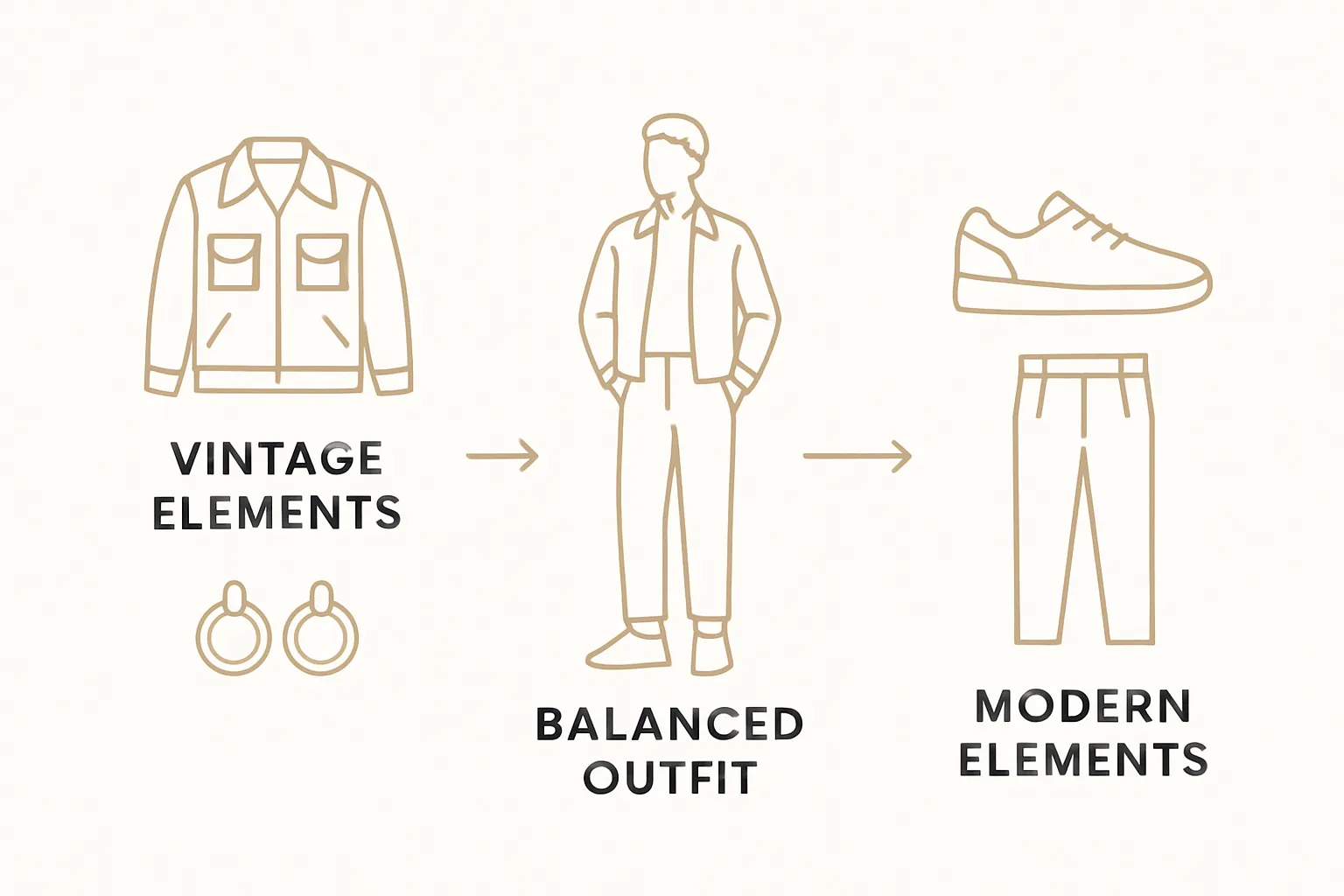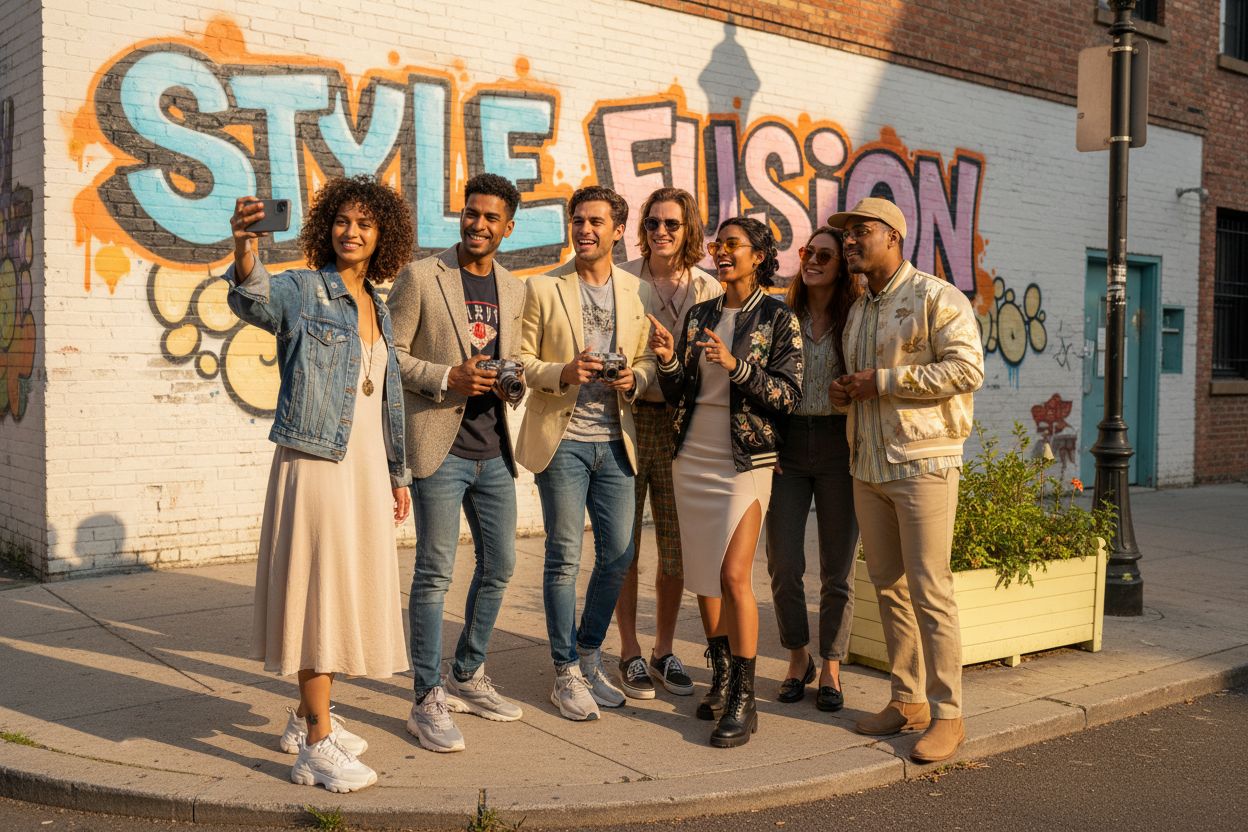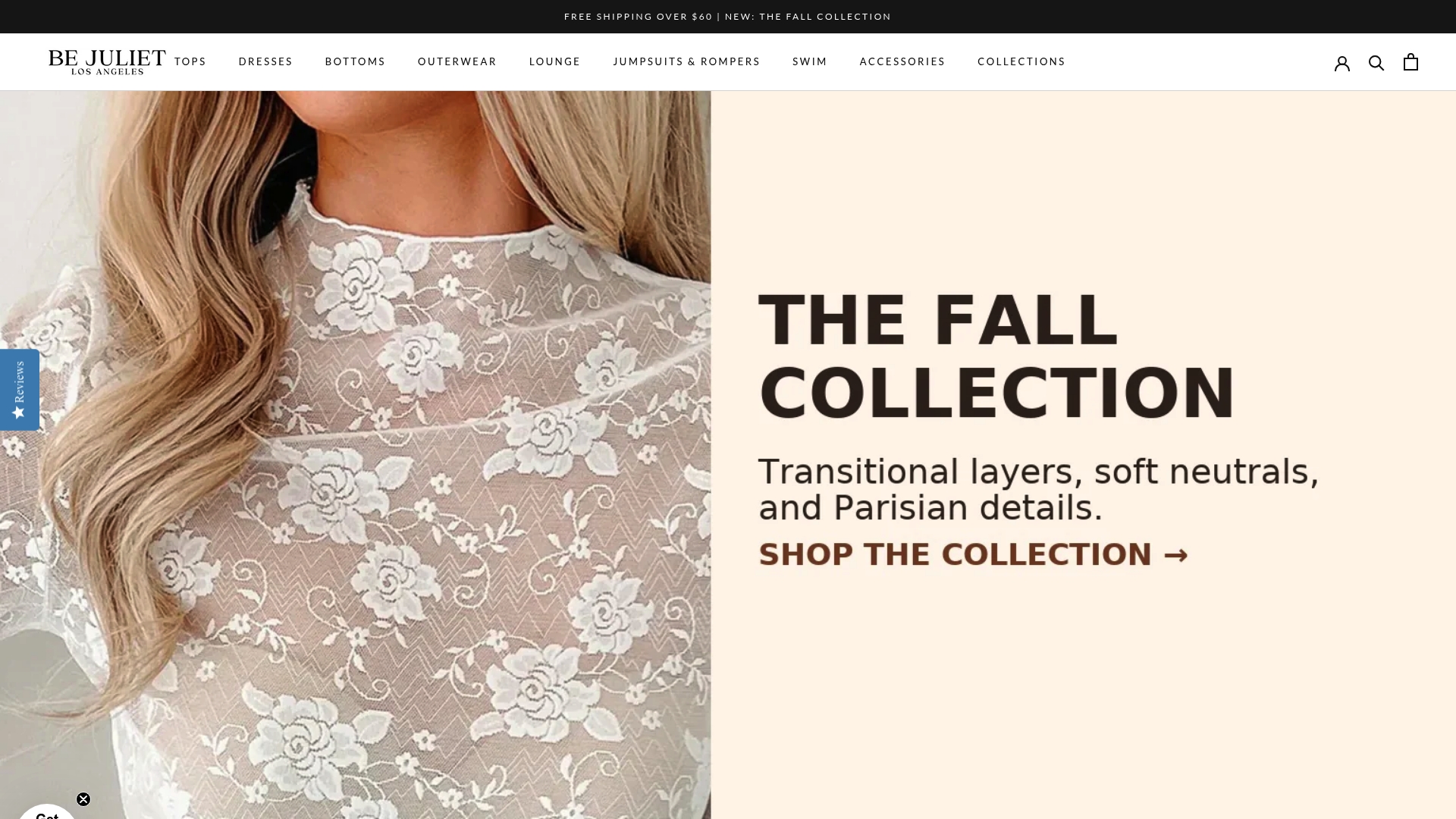Understanding the Art of Mixing Vintage and Modern Styles
Mixing vintage and modern styles has become a bold way for fashion lovers to make their mark. People are now combining classics from the past with today’s hottest trends, and over 60 percent of Gen Z shoppers say they regularly mix vintage finds with new pieces. It sounds like a wild clash of old and new. Except the real magic comes not from copying trends, but from blending eras in a way that feels both personal and entirely fresh.
Table of Contents
- What Is Mixing Vintage And Modern Styles?
- Why Mixing Vintage And Modern Matters In Fashion
- How Mixing Vintage And Modern Works In Design
- Key Concepts In Blending Vintage And Modern Elements
- Practical Applications Of Mixing Vintage And Modern Styles
Quick Summary
| Takeaway | Explanation |
|---|---|
| Mix vintage and modern pieces strategically | To create unique outfits, merge clothing from different eras thoughtfully without strict adherence to historical accuracy. |
| Focus on balance and proportion | Ensure that vintage and modern elements complement each other in terms of shape, color, and overall visual appeal. |
| Practice sustainability through style mixing | Incorporating vintage items reduces demand for new production and promotes a more environmentally conscious wardrobe. |
| Utilize accessory elevation for modern touches | Use contemporary accessories to update vintage clothing, making the outfits feel relevant and stylish today. |
| Layering adds depth to style | Combine different eras by layering both vintage and modern garments to create complex visual stories that feel intentional. |
What is Mixing Vintage and Modern Styles?
Mixing vintage and modern styles is an innovative fashion approach that bridges different design eras by strategically combining clothing pieces from different time periods. This aesthetic blends the nostalgic charm of vintage garments with contemporary fashion trends, creating unique and personalized outfits that transcend traditional style boundaries.
The Core Philosophy of Style Fusion
At its essence, mixing vintage and modern styles is about harmonizing contrasting design elements to create a cohesive and visually compelling ensemble. This approach celebrates the individuality of personal style by breaking away from rigid fashion rules.
To help you quickly compare the key philosophies and benefits behind mixing vintage and modern styles, the following table outlines their core elements side by side.
| Aspect | Vintage Elements | Modern Elements |
|---|---|---|
| Core Design Era | Inspired by past decades | Reflects current trends |
| Emotional Connection | Nostalgic, often sentimental | Fresh, progressive, in-the-moment |
| Typical Silhouettes | Classic, structured, sometimes ornate | Streamlined, innovative, often minimalist |
| Color Approach | Rich, muted, or retro color palettes | Bold, experimental, sometimes neutral |
| Role in Personal Expression | Connects to history and individuality | Reflects latest self-identity and cultural context |
| Impact on Sustainability | Extends lifecycle of quality items | May contribute to fast fashion or conscious design |
| Narrative Contribution | Imbues outfit with story and meaning | Keeps look feeling relevant and forward-thinking |
Key Principles of Successful Style Mixing
Successful style mixing relies on several fundamental principles:

-
Balance: Creating visual equilibrium between vintage and modern elements
-
Proportion: Understanding how different silhouettes from various eras can complement each other
-
Color Coordination: Selecting pieces that share complementary color palettes or create intentional color contrast
The art of mixing vintage and modern styles requires a nuanced understanding of fashion history and contemporary trends. Read our guide on finding fashion inspiration to develop a more sophisticated approach to style creation. By thoughtfully curating pieces that represent different design periods, fashion enthusiasts can craft outfits that are simultaneously nostalgic and forward-thinking.
Why Mixing Vintage and Modern Matters in Fashion
Mixing vintage and modern styles transcends mere fashion experimentation. It represents a powerful form of personal expression that challenges traditional design constraints and celebrates individual creativity. This approach allows fashion enthusiasts to craft narratives through clothing that reflect personal identity, cultural appreciation, and aesthetic innovation.
Personal Expression and Cultural Significance
By blending pieces from different eras, individuals create visual stories that communicate complex identities. Vintage garments carry historical narratives and emotional connections, while contemporary pieces represent current cultural contexts. When combined thoughtfully, these elements communicate a nuanced understanding of personal style that goes beyond surface level trends.
Sustainability and Fashion Consciousness
Mixing vintage and modern styles also plays a crucial role in sustainable fashion practices. By integrating pre-existing garments into contemporary wardrobes, fashion lovers can:
-
Reduce demand for mass production
-
Extend the lifecycle of quality clothing pieces
-
Challenge the disposable nature of fast fashion
-
Create unique outfits with lower environmental impact
Explore our guide to effortless style mixing to understand how thoughtful curation can transform your wardrobe. The practice of combining vintage and modern elements is more than a trend. It represents a sophisticated approach to personal style that honors fashion history while remaining firmly rooted in contemporary aesthetic sensibilities.
How Mixing Vintage and Modern Works in Design
Mixing vintage and modern styles is a strategic design process that requires a sophisticated understanding of fashion aesthetics, proportions, and visual harmony. Unlike simple clothing combinations, this approach demands careful consideration of how different design elements interact and complement each other across historical contexts.
Design Principles and Visual Composition
The mechanics of mixing vintage and modern styles revolve around creating balanced visual compositions. This involves understanding the architectural lines, fabric textures, and silhouette structures of garments from different eras. Designers and fashion enthusiasts must analyze how structural elements from vintage pieces can be reinterpreted through contemporary styling techniques.
Technical Approaches to Style Integration
Successful integration of vintage and modern styles relies on several technical strategies:
-
Anchor Piece Strategy: Selecting a strong vintage or modern item as the foundational element of an outfit
-
Proportional Balancing: Ensuring that vintage and modern pieces create a harmonious overall silhouette
-
Textural Contrast: Deliberately combining different fabric weights and textures to create visual interest
Learn more about understanding timeless fashion choices to refine your approach to style mixing. By mastering these design principles, fashion creators can transform individual clothing pieces into sophisticated, narrative driven ensembles that transcend traditional fashion categorizations.
Below, this table breaks down the practical strategies for integrating vintage and modern pieces into a single outfit, summarizing their focus and results.
| Strategy | Focus | Result |
|---|---|---|
| Anchor Piece Strategy | Use a key vintage or modern item as focal point | Establishes a clear theme for the outfit |
| Proportional Balancing | Ensure silhouettes and shapes are harmonious | Creates visual equilibrium and contemporary relevance |
| Textural Contrast | Combine different fabric weights/textures | Adds depth, interest, and dimension to the look |
| Accessory Elevation | Modernize vintage garments with updated accessories | Makes vintage pieces feel fresh and connected to today |
| Layering Strategies | Mix garments from different eras together | Builds complex, multidimensional visual stories |
Key Concepts in Blending Vintage and Modern Elements
Blending vintage and modern elements requires a nuanced understanding of design principles that go beyond simple aesthetic combinations. This approach demands a sophisticated visual dialogue between different design eras, where each piece contributes to a complex narrative of style and personal expression.
The Art of Visual Dialogue
Successful style blending is fundamentally about creating meaningful conversations between different design periods. Each vintage or modern piece carries its own historical and aesthetic language, and the skill lies in orchestrating these elements to speak cohesively. This means understanding not just the individual characteristics of each garment, but how they interact, contrast, and ultimately complement each other.
Strategic Design Integration
The integration of vintage and modern elements requires careful strategic considerations:
-
Intentional Contrast: Deliberately highlighting differences between vintage and contemporary design elements
-
Structural Resonance: Identifying underlying design principles that connect pieces across different time periods
-
Emotional Narrative: Understanding how clothing pieces communicate personal stories and cultural contexts
Explore our approach to understanding timeless versus trendy fashion to deepen your comprehension of style mixing. By mastering these conceptual frameworks, fashion enthusiasts can transform clothing from mere fabric and design into powerful statements of individual creativity and cultural appreciation.
Practical Applications of Mixing Vintage and Modern Styles
Practical application of mixing vintage and modern styles transforms theoretical design principles into tangible fashion experiences. This approach goes beyond academic contemplation, offering real world strategies for individuals seeking to create distinctive and personalized wardrobes that reflect complex personal narratives.
Wardrobe Integration Techniques
Successful practical implementation involves strategic approaches to incorporating vintage pieces within contemporary fashion contexts. This requires understanding how different garments can be layered, paired, and styled to create cohesive looks that feel intentional rather than accidental. The key lies in maintaining visual balance while allowing individual pieces to retain their unique historical character.
Contextual Style Transformation
Style mixing becomes most powerful when understood as a dynamic process of recontextualization. Different fashion elements can be transformed through:
-
Accessory Elevation: Using contemporary accessories to modernize vintage base pieces
-
Layering Strategies: Combining vintage and modern garments to create multi dimensional visual narratives
-
Silhouette Reimagination: Reinterpreting historical design elements through current styling perspectives
Discover how music influences fashion aesthetics and understand another dimension of style evolution. By embracing these practical techniques, fashion enthusiasts can develop a nuanced approach to personal styling that transcends traditional fashion boundaries and celebrates individual creativity.

Bring Vintage and Modern Harmony to Life with Be Juliet
If blending vintage charm with modern vibrancy feels overwhelming, you are not alone. Many readers crave outfits that strike the perfect balance of nostalgia and current trends, yet struggle to achieve true harmony without clashing styles. The article highlights the importance of balance, proportion, and color coordination—all essential for creating a look that stands out and still feels authentic. Our Vintage Stackable Ring Set is thoughtfully designed for those experimenting with style fusion, offering timeless pieces that instantly elevate any ensemble with a unique, personalized touch.

Ready to express every facet of your individuality through curated style? Visit Be Juliet and discover jewelry and apparel collections curated with both vintage and modern spirits in mind. Explore our selection now to craft looks that resonate with your story. Let your personal style journey start today with inspired pieces that effortlessly bridge eras.
Frequently Asked Questions
What are the key principles for successfully mixing vintage and modern styles?
Successful style mixing relies on three key principles: balance, proportion, and color coordination. Achieving visual equilibrium between vintage and modern elements is essential, as well as understanding how their silhouettes complement each other and selecting pieces that share complementary colors.
How does mixing vintage and modern styles contribute to sustainability in fashion?
By integrating vintage garments into contemporary wardrobes, mixing vintage and modern styles helps reduce the demand for mass production, extends the lifecycle of quality clothing, challenges the disposable nature of fast fashion, and creates unique outfits with a lower environmental impact.
What are some effective strategies for integrating vintage pieces into modern outfits?
Effective strategies include using an anchor piece to build an outfit, ensuring proportionate balancing between vintage and contemporary items, and deliberately combining different fabric textures for visual interest. Layering and accessorizing can also elevate vintage items with a modern touch.
Why is personal expression important in mixing vintage and modern styles?
Mixing vintage and modern styles allows individuals to create visual narratives that communicate complex identities and personal stories. This approach celebrates individual creativity, appreciates cultural history, and reinterprets past styles in a contemporary context.
Recommended
- Mix and Match Outfits: Effortless Style for Every Woman – Be Juliet
- How to Find Fashion Inspiration: Fresh Ideas for 2025 – Be Juliet
- Understanding the Influence of Music on Fashion – Be Juliet
- Understanding Timeless vs Trendy in Fashion Choices – Be Juliet
- Understanding Vintage Inspired Interior Design Concepts – OnlyRetro
- Understanding the Role of Vintage in Style
